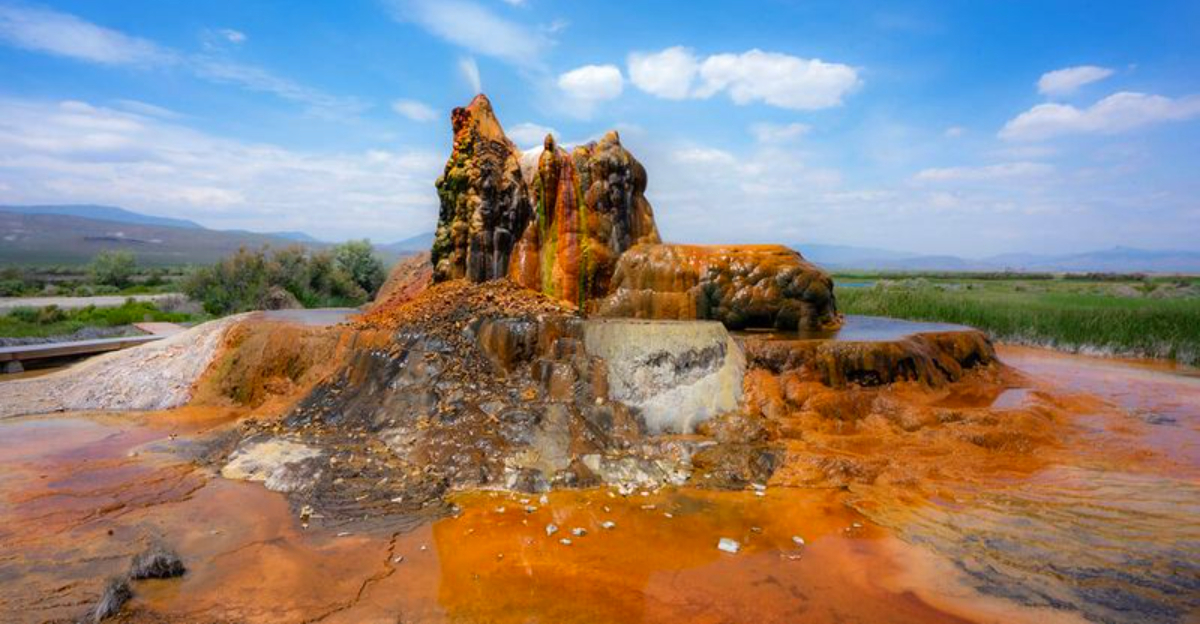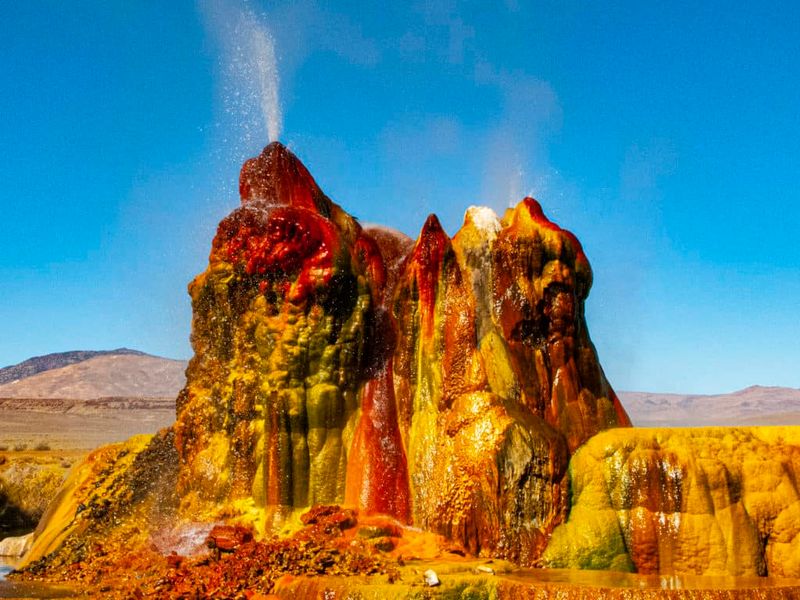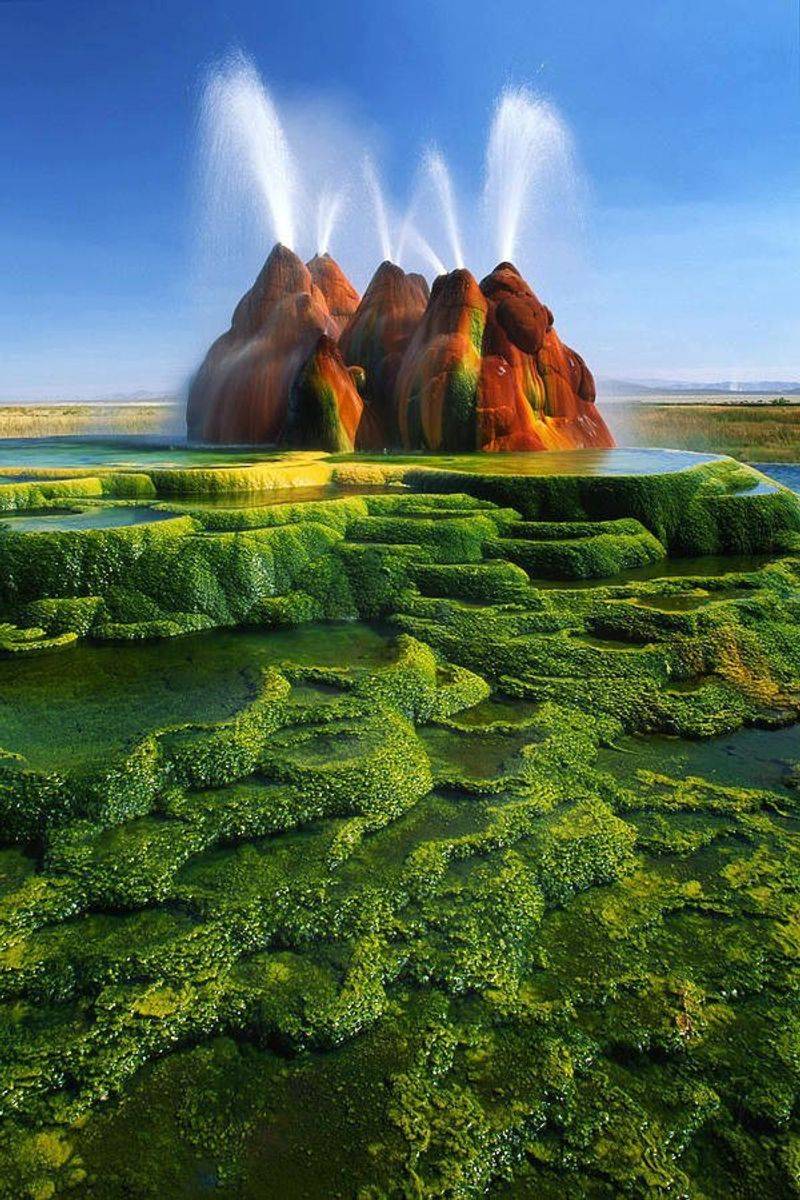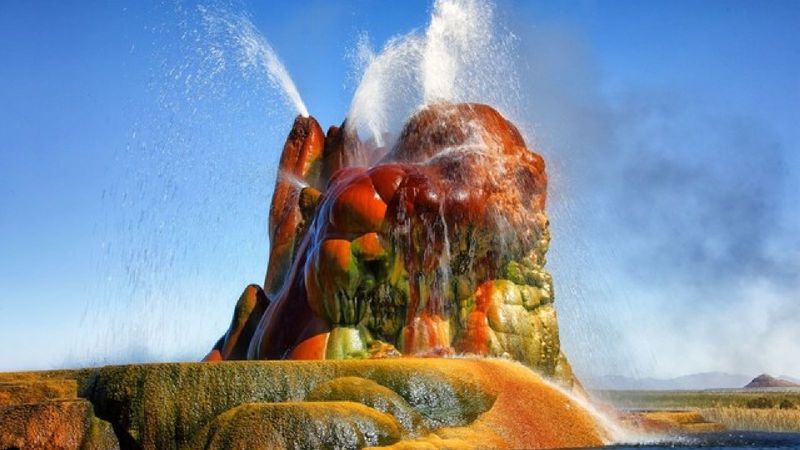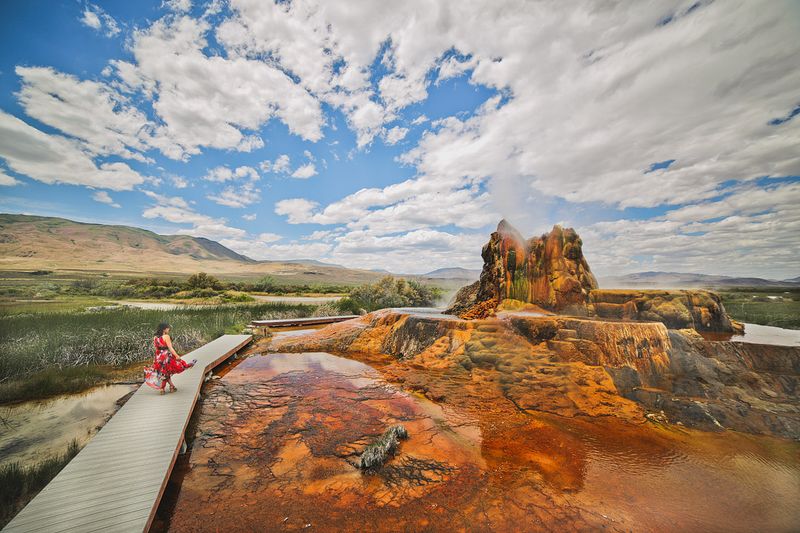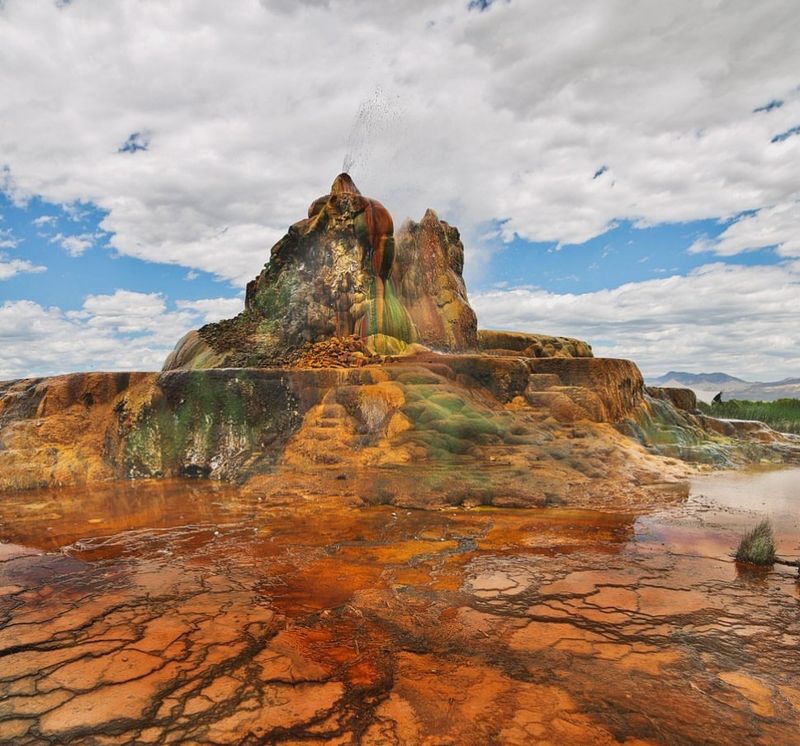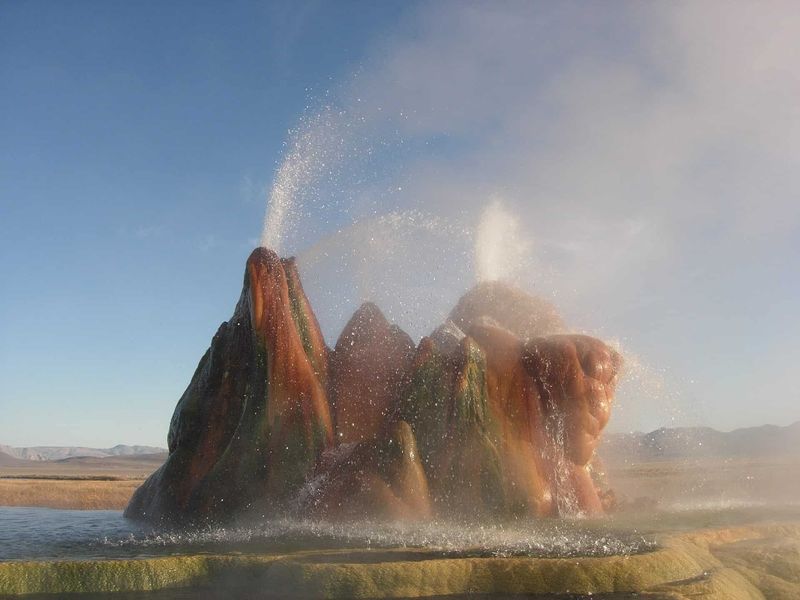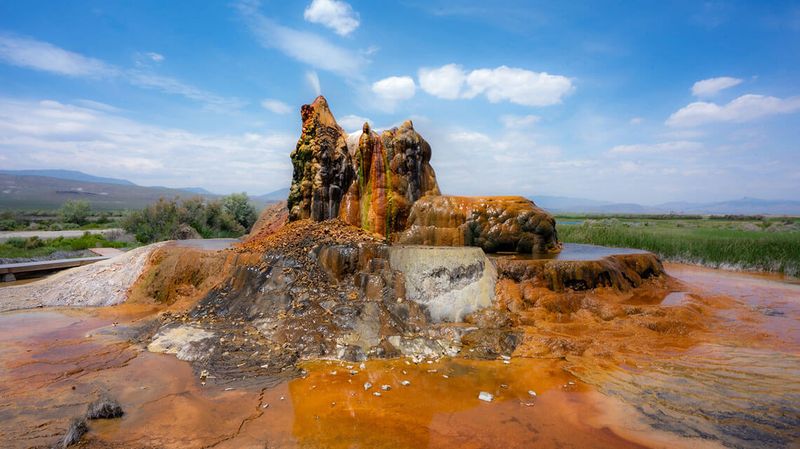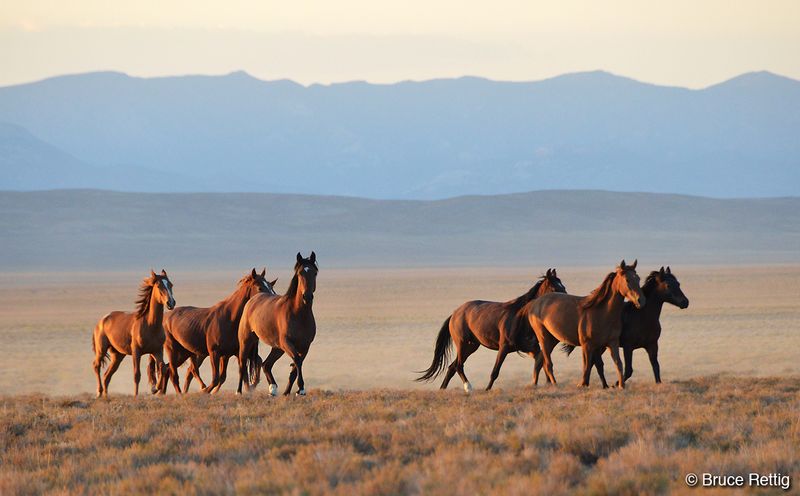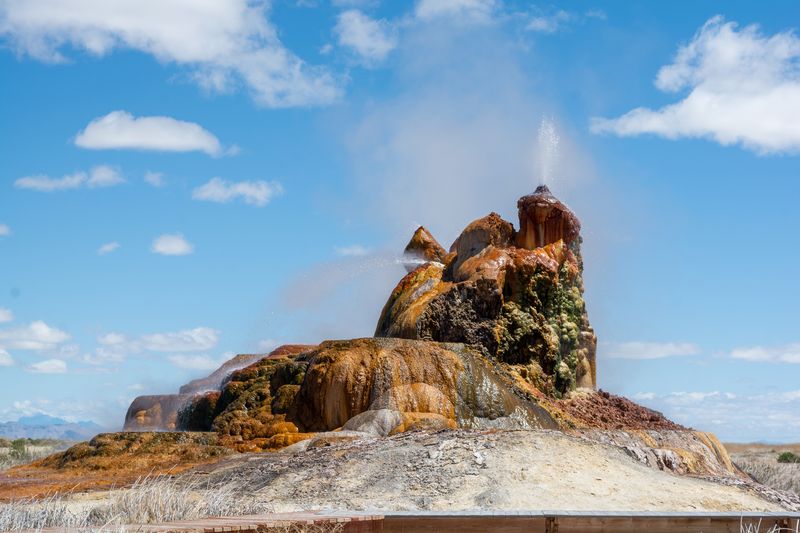Hidden in Nevada’s Black Rock Desert sits one of nature’s most beautiful mistakes. Fly Geyser wasn’t carved by ancient forces or volcanic eruptions – it was accidentally created by humans drilling for energy in the 1960s. Today, this rainbow-colored wonder shoots hot water into the air nonstop, covered in living algae that paint it red, green, and orange. Though it sits on private land, guided tours let curious visitors witness this surreal, ever-changing masterpiece up close.
1. It Was Accidentally Created in the 1960s
Back in 1964, a geothermal energy company was searching for power sources in the remote Nevada desert. They drilled a test well on Fly Ranch near the tiny town of Gerlach, hoping to tap into underground heat.
Instead, they hit a pocket of scalding geothermally heated water and abandoned the project. The well wasn’t properly sealed, so hot water kept pushing its way to the surface.
Over decades, minerals in the water began piling up, layer after layer. This slow buildup eventually formed the cone-shaped geyser that stands today – a stunning accident born from human error and nature’s persistence.
2. It’s Constantly Erupting — But Gently
Forget waiting around for a big show like at Yellowstone. Fly Geyser doesn’t follow a schedule because it never stops flowing.
Hot water around 200°F sprays gently into the air, reaching about five feet high. The continuous stream creates a network of small terraced pools below, each one shimmering with color.
This steady, gentle eruption makes the geyser feel alive and active every single moment. Visitors don’t need to time their trip perfectly – the geyser is always performing. It’s a reminder that not all natural wonders need drama to be breathtaking.
3. The Colors Are 100% Natural
Those eye-popping reds, greens, and oranges covering the geyser aren’t painted on – they’re alive. Thermophilic algae thrive in the hot, wet conditions around the geyser, producing brilliant natural pigments.
These tiny organisms love extreme heat and moisture, making Fly Geyser the perfect home. As minerals from the water mix with the algae, the colors shift and change over time.
Every visit offers a slightly different palette, like watching a living painting evolve. The combination of biology and geology creates one of the most photogenic spots in Nevada, proving nature’s artistry needs no human touch.
4. It’s Located on Private Land
Unlike many natural landmarks, you can’t just drive up and park at Fly Geyser. The site sits on Fly Ranch, private property now owned by the Burning Man Project – the same nonprofit behind the famous annual desert gathering.
The land is gated and carefully monitored to protect the delicate geyser and surrounding ecosystem. Trespassing isn’t allowed, and security measures are in place.
This might sound frustrating, but it’s actually helped preserve the geyser’s beauty. Without restrictions, the fragile formations could be damaged by careless visitors. Ownership by Burning Man has opened limited access while keeping the site safe.
5. You Can Visit, But Only on a Guided Tour
Want to see Fly Geyser in person? You’ll need to book ahead. The Friends of Black Rock–High Rock organization offers guided walking tours of Fly Ranch that include close views of the geyser.
Reservations are required, and tour groups are kept small to reduce impact on the fragile environment. Tours typically cover the history, geology, and ecology of the area.
Guides share fascinating details you wouldn’t learn on your own. Though access is limited, the experience is worth the effort – seeing this rainbow wonder up close is unforgettable. Plan early, as spots fill up quickly during peak season.
6. There Are More Geysers Nearby
Fly Geyser might be the star, but it’s not alone. The surrounding area features several other man-made geothermal formations created by earlier drilling attempts.
These older geysers are less colorful and dramatic, but they tell the same story of accidental creation. Each one resulted from hitting underground hot water sources during exploration.
Walking the area feels like discovering a secret geothermal park. The collection of features shows how persistent geothermal activity is in this part of Nevada. Together, they create a unique landscape found nowhere else on Earth, all thanks to human curiosity and nature’s response.
7. It’s Still Changing and Growing
Fly Geyser isn’t frozen in time – it’s constantly evolving. Minerals in the hot water, mostly calcium carbonate, continue depositing with every drop that flows.
This slow accumulation causes the mound and terraces to grow gradually, changing the geyser’s shape and size. What you see today won’t look exactly the same in ten or twenty years.
It’s a living geological process happening right before our eyes. The geyser’s growth reminds us that Earth is always changing, even if we don’t always notice. Visiting now means witnessing a specific moment in its ongoing transformation.
8. The Surrounding Desert Is Otherworldly
The Black Rock Desert surrounding Fly Geyser is one of the most remote and mesmerizing landscapes in America. Its vast dry lakebed stretches endlessly, creating a stark, almost alien backdrop.
Wild horses roam freely across the desert, and dramatic sunsets paint the sky in brilliant colors. The contrast between the barren desert and the vibrant geyser is striking.
Standing there feels like being on another planet. The isolation and beauty make the journey worthwhile, even without the geyser. Together, the desert and the geyser create an unforgettable experience that stays with you long after you leave.
9. Protection Is a Priority
Because Fly Geyser is incredibly delicate, access is carefully controlled to preserve its structure and ecosystem. Even small disturbances can harm the fragile algae and mineral formations that make it unique.
Visitors are strictly asked not to touch the geyser or the surrounding pools. Oils from human skin can kill the thermophilic algae, permanently altering the colors.
Rangers and guides emphasize the importance of respectful observation. These rules might seem strict, but they ensure future generations can enjoy this accidental masterpiece. Protecting Fly Geyser means balancing human curiosity with environmental responsibility – a challenge worth meeting.
